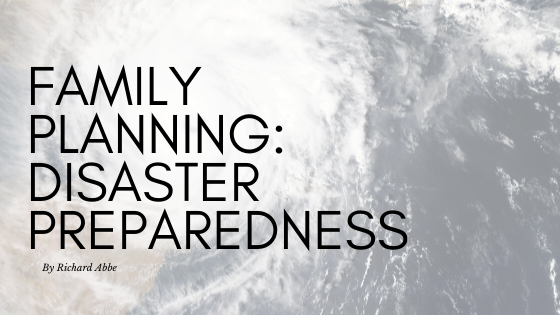Disasters can strike at any time and typically occur anyplace. In many instances, the victims were not prepared for such events and had no appropriate reaction strategy. Fortunately, however, the creation of a preparedness plan might enable families to property loss, injury, or even personal tragedy when potentially disastrous events occur.
Aspects Of A Solid Disaster Preparedness Plan
Stress The Importance
Most family members are busy with work, school, and social activities. Ergo, trying to force the concept of disaster preparedness on them at the wrong time might have detrimental results. Therefore, initiating this process could be difficult. However, the plan’s author must find time to stress the importance of completing such activity and the potentially adverse events that might transpire should the unit remain unprepared.
Identify Possible Hazards
Numerous different dangers can spark potentially disastrous events. Identifying potential hazards might give a family a significant leg up in either preventing or knowing how to react to any specific untoward incident appropriately. The hazard identification process should include the recognition of dangerous events that might occur in the community the family resides in, like weather phenomena, fires, earthquakes, or chemical spills. Moreover, attention should be given to possible dangers within the home, such as gas leaks, faulty electrical wiring, and unstable construction.
Begin The Preparation Process
Once all potential hazards have been identified, the family in question should initiate the preparation process. In regards to possible household dangers, the unit should consider engaging in preventative measures like having gas lines, electrical wiring, and their home’s structural integrity examined.
In preparation for natural or chemical disasters, family members are urged to consider mapping out escape routes, coordinating their escape, creating a complete inventory of their home and assets, and becoming trained in first aid in pertinent life-saving techniques like cardio-pulmonary resuscitation. Furthermore, all emergency numbers, like those directly contacting local police and fire departments, should be featured prominently in an easily viewed area of the home. Additionally, each family member should be given a specific duty in the event of an emergency.
Set Up A Trial Run
Granted, nothing can prepare individuals for an actual disaster. That said, final preliminary plans should be executed in a trial run. Orchestrating a mock disaster in which everyone performs their assigned role at least twice per year could prove a valuable step in remaining prepared. These trials enable the unit to offer a thorough review and correct any discernible flaws.

